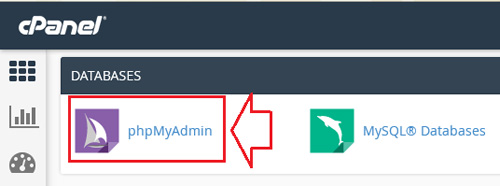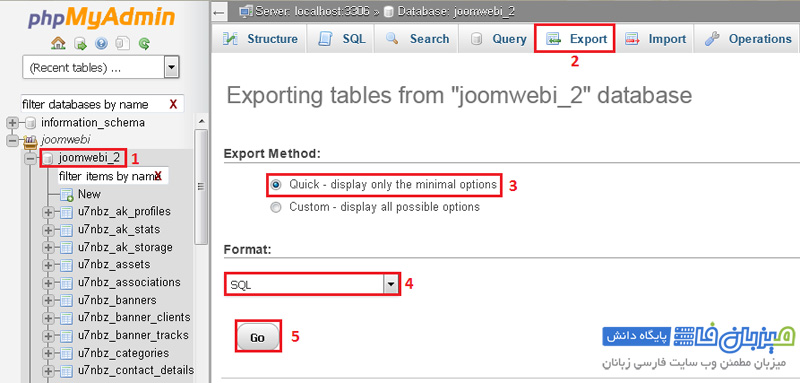Learn how to export or output sql files. Via phpmyadmin on hosts
In this tutorial, we will output or export .sql files from databases and teach you to step by step. Through video, Exporting a database is like preparing a dump from a database, which is also a type of backup. By preparing an output from the database, you can keep a complete copy of it in your computer system and, when necessary, import it using the import operation. Enter the database you want. Of course, note that through PHPMyAdmin, you will only be able to import databases with a size of less than 50 MB in the host, and if the size of your database is more than this amount, you should use programs such as MySQL Dumper or via SSH instead. Use PHPMyAdmin.
Follow the steps below to prepare the database output:
- panel hosting in this hosting tutorial C-panel )
- Click on PHPMyAdmin in the Databases category.
- After opening the PHPMyAdmin environment in the left panel of the page, you will see a list of databases created in the host. Select the database you want.
- Click on the Export tab.
- From the Export Method section, select the Quick – display only the minimal options option, and if you need special settings, you can select the Custom – display all possible options option. The first option is recommended.
- From the Format section, set the file type to SQL.
- Click Go.
- At this stage, the file storage page with the .sql extension will be displayed on your local system, and you can easily save the database file to your computer system.
It is recommended to perform operations such as creating a database, creating a user, managing user privileges, and through the hosting panel instead of PHPMyAdmin because actions outside the hosting control panel may not be performed correctly and may not have the desired results. On Linux systems such as servers, database names, users, and tables are case sensitive, while on Windows-based systems, this is not case sensitive.













